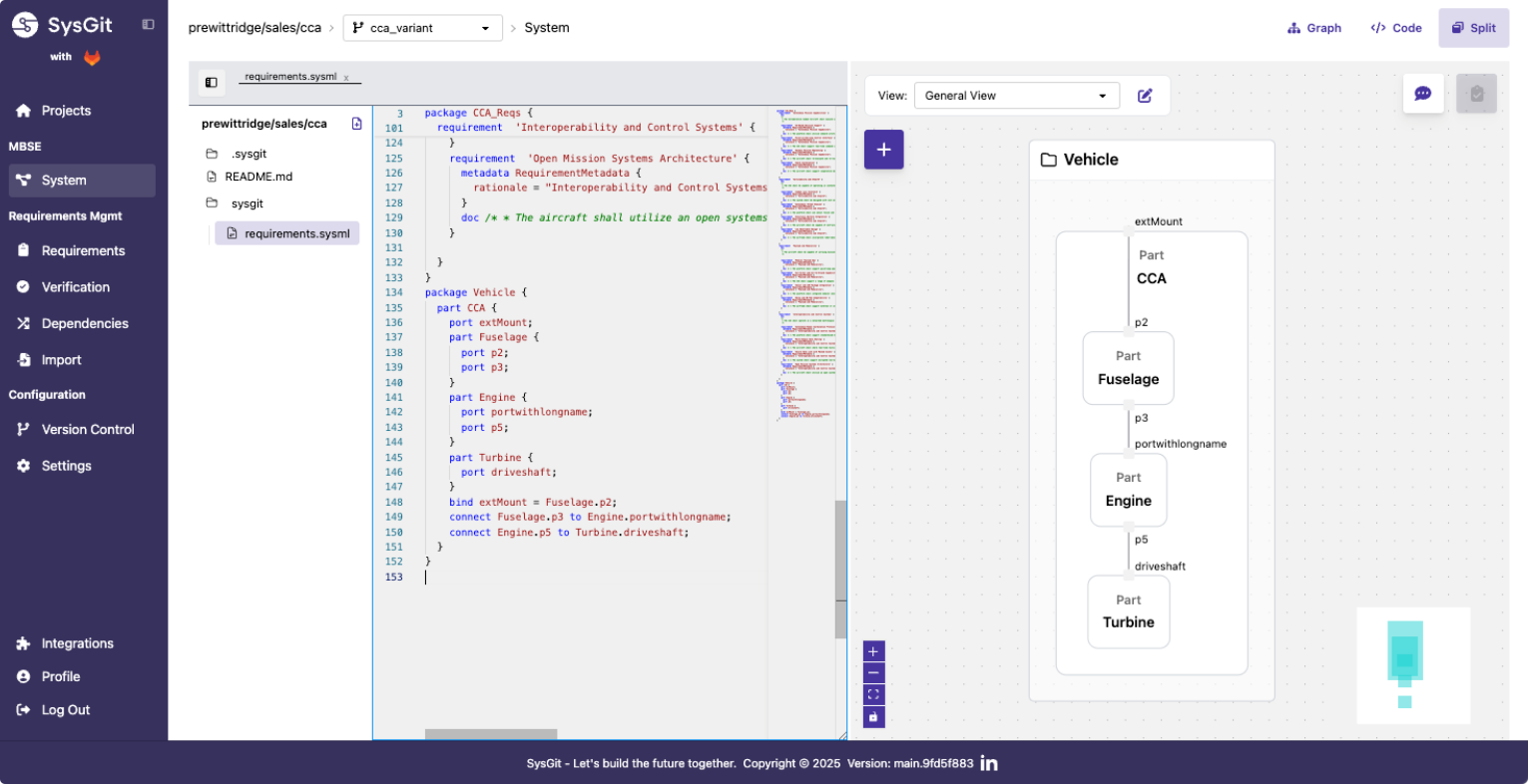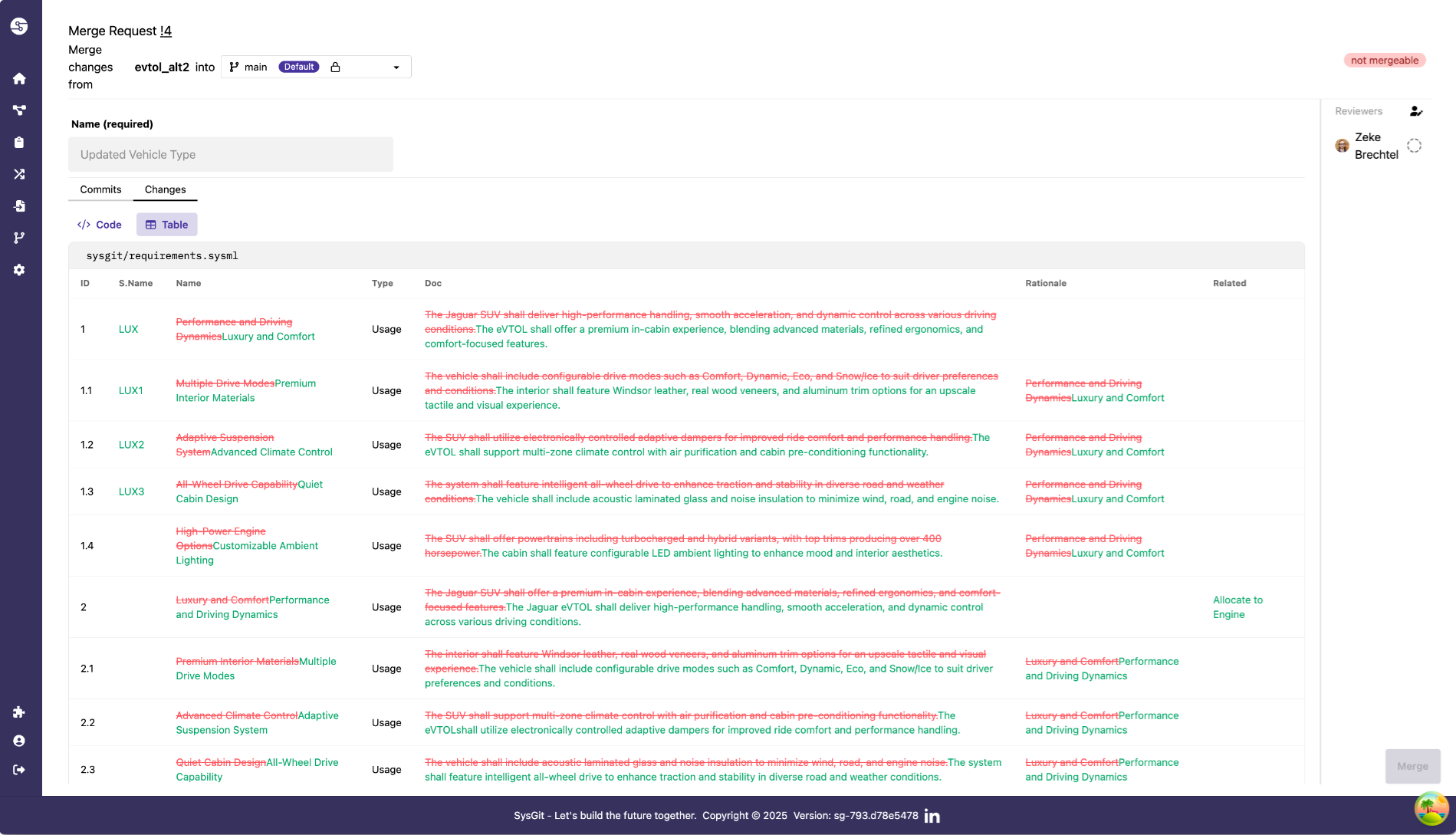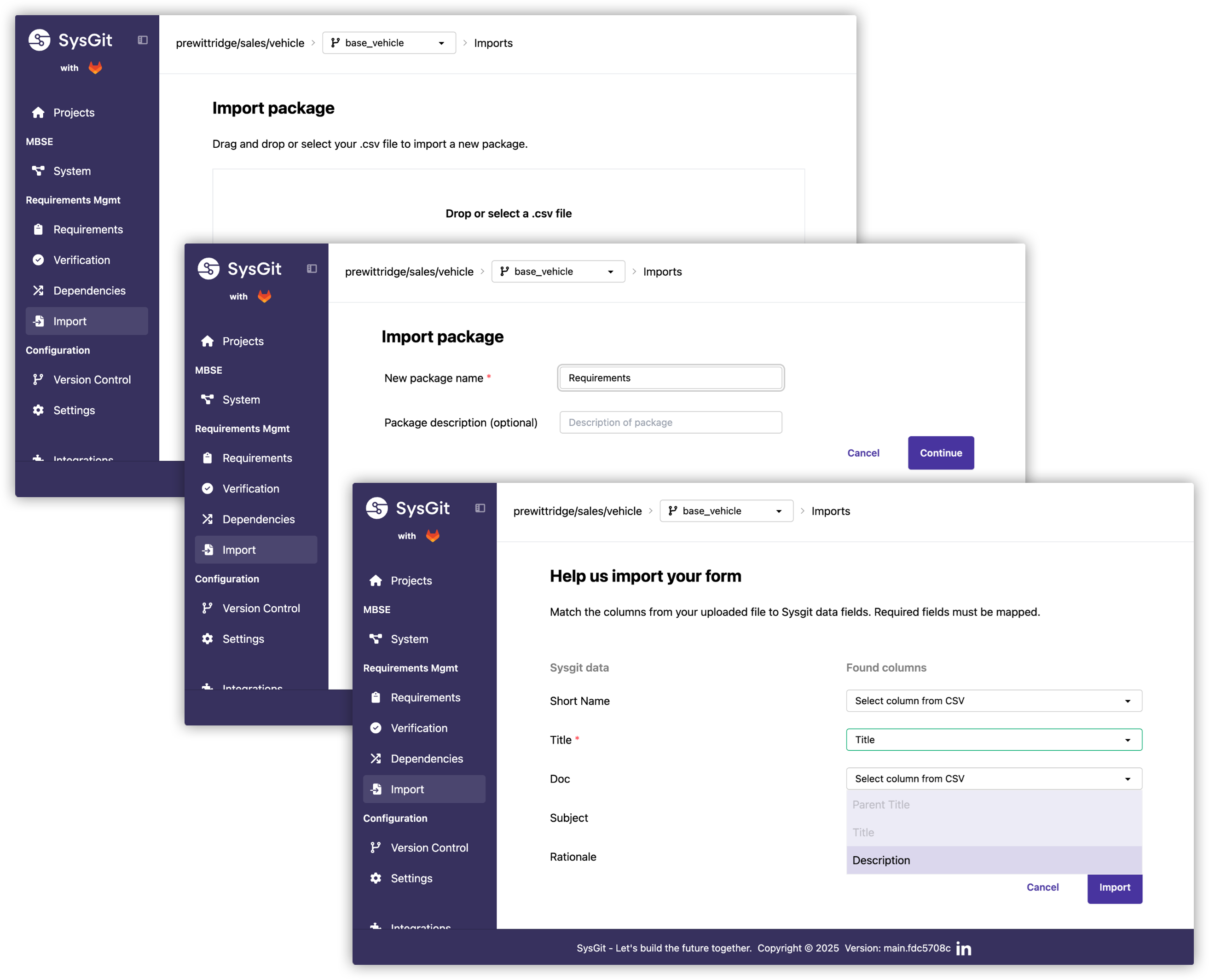Treat Hardware as Code with our SysML V2 Native Systems Modeler.
With SysGit, apply the battle-tested functions of software development to enable iterative hardware development and continuous acquisition.
SysGit allows engineers to:
Create, refine, and review system models and requirements.
Store system data as code using open formats and existing infrastructure
Access familiar interfaces for all engineering stakeholders



